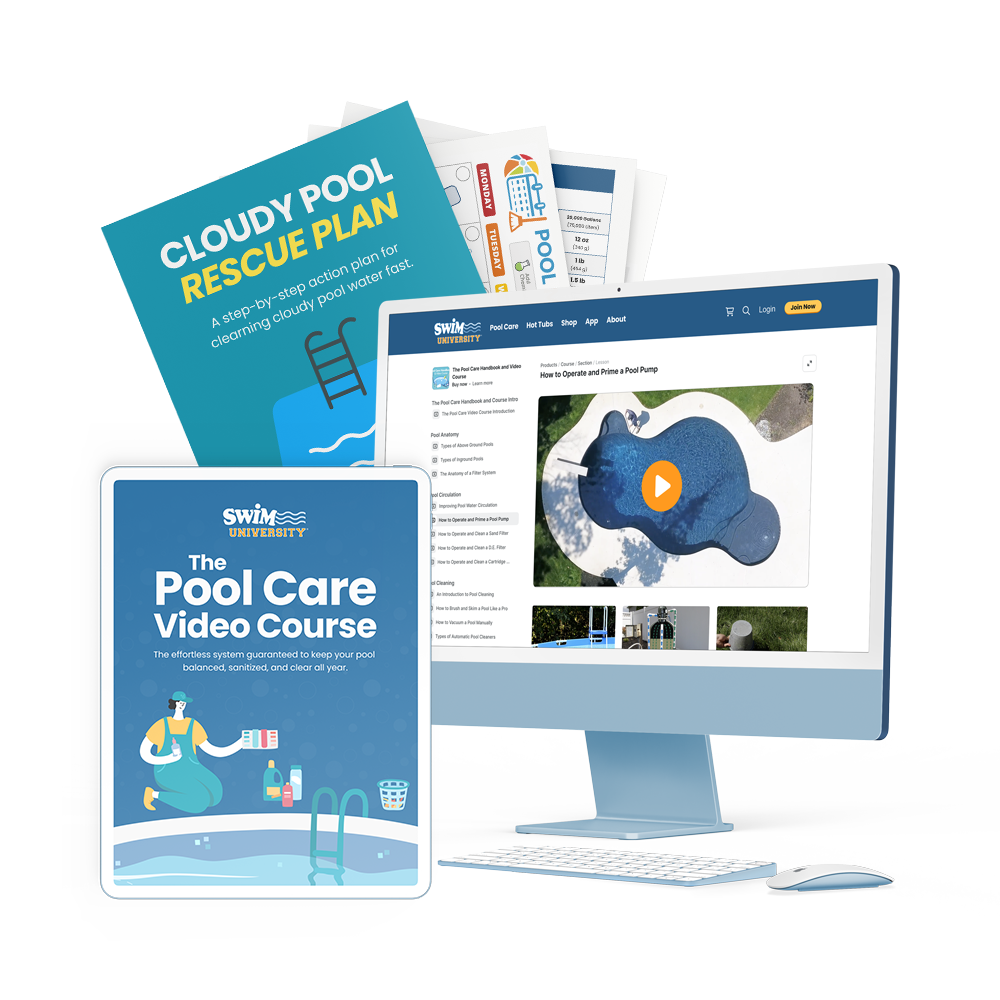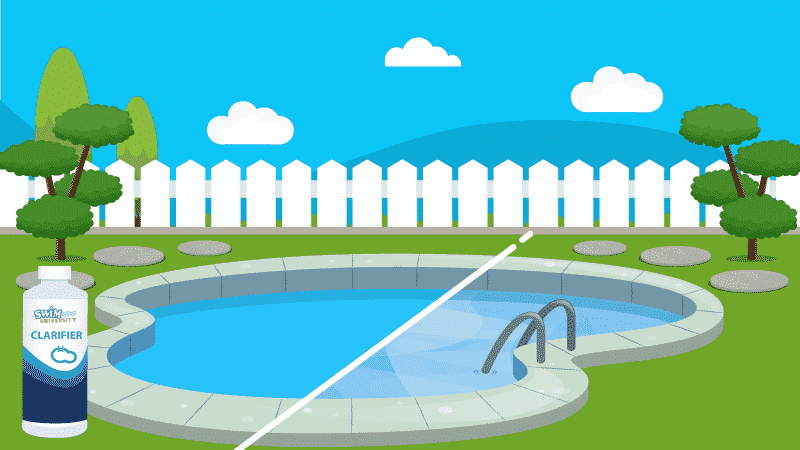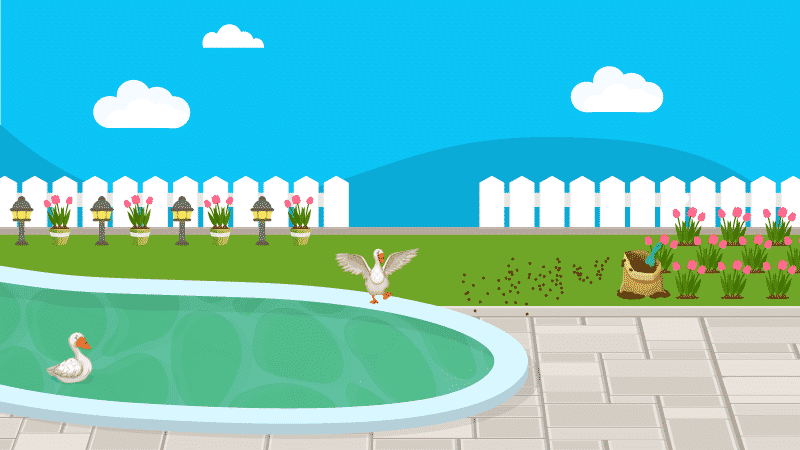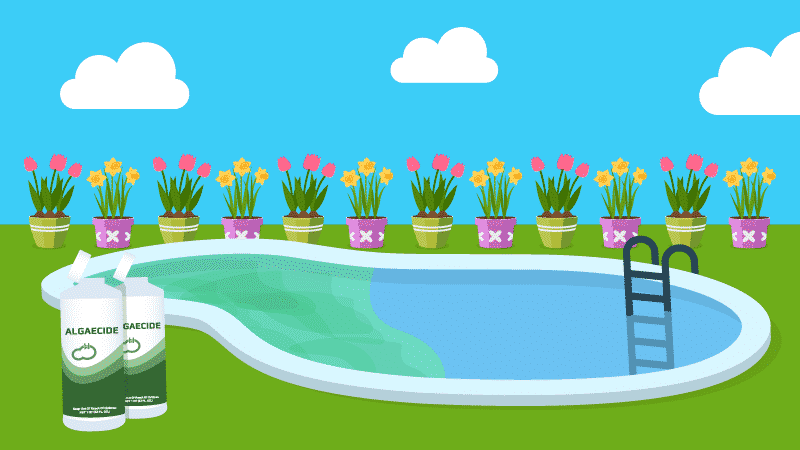Pool Flocculant: How Does It Work and Is It Better Than Pool Clarifier?
If you’ve got cloudy pool water and you want to clear it up fast,
Here’s a quick guide on the difference between flocculant and clarifier and how to use flocculant to clear cloudy water. You can watch the quick video below. Or keep reading for the complete
Stop wasting time and money with confusing water chemistry and maintenance. Our effortless system guarantees to keep your pool balanced, sanitized, and crystal clear all year. Works for all pools including saltwater.
What is Pool Flocculant ?
Pool flocculant, also known as pool floc, clumps together the tiny particles in your pool that cause cloudy water. Once those particles have coagulated, the larger clumps sink to the bottom of your swimming pool where they’re vacuumed out.
Here’s the
What’s the Difference Between Pool Clarifier and Pool Flocculant ?
Pool flocculant coagulates small particles into larger clumps that sink to the bottom of the pool. Floc is faster and more effective than a clarifier, but it requires more work and must be manually removed with a pool vacuum. Pool clarifier, on the other hand, coagulates particles into smaller clumps that are removed by the pool filter. It’s easier to use than floc, but it’s not as powerful and generally takes longer to clear up your pool water.
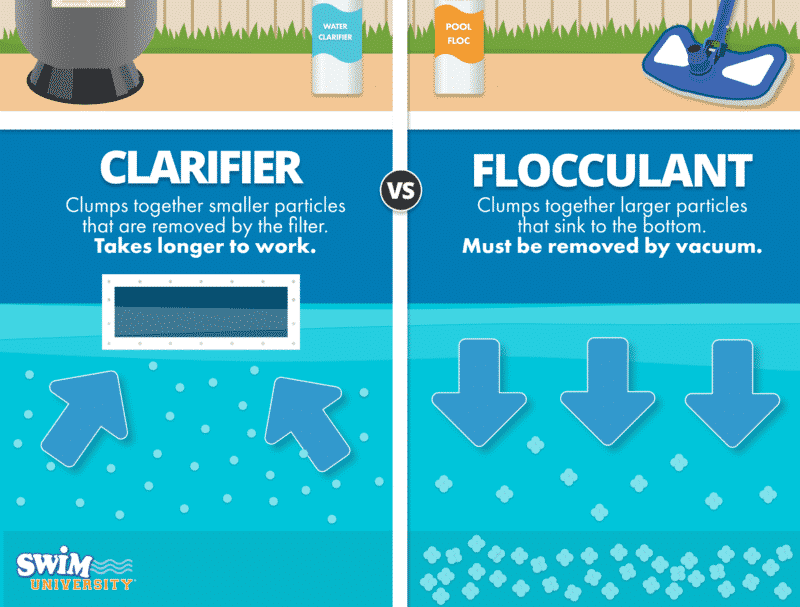
What Are the Benefits of Pool Flocculant ?
In many cloudy water situations,
- Pool flocculant works quickly. Unlike clarifier, you won’t have to wait days for flocculant to do its job. The particles quickly coagulate together and sink to your pool floor in a matter of hours.
- Pool flocculant is very effective. Flocculant keeps particles clumped together until you remove them with a vacuum. No stragglers are left behind causing cloudy spots in your swimming pool water.
- Pool flocculant works well with sand filters and diatomaceous earth or DE filters. Those filters have multiport valves that include a “Waste” setting. And that means it’s easy to bypass the filter when vacuuming out the clumped particles and flocculant.
What Are the Downsides of Pool Flocculant ?
Before you opt for a
- Pool flocculant requires more work. Once the clumps form on the bottom of the pool, you’ll need to remove them with a manual pool vacuum. An automatic pool vacuum will not work.
- You’ll lose pool water using
pool flocculant . When you vacuum the clumps out, you’ll need to vacuum on the “waste” setting and bypass the filter. All of that water will leave your pool and your water level will drop. - You can’t use
pool flocculant with a cartridge filter. Unless you have a custom plumbing setup that allows you to bypass the filter when you vacuum, you won’t be able to usepool flocculant with a cartridge filter system.
How Long Does it Take for Pool Flocculant to Work?
Pool flocculant can clear up your cloudy pool water in 1 or 2 days. Though it works faster than pool clarifiers, it will need 8 to 16 hours to clump together the particles before you can vacuum. Add flocculant to your pool with your filter on “recirculate.” Then let the flocculant sit overnight with your pool pump off. Once it has settled to the bottom of your pool, use a manual vacuum to remove all of the coagulated particles.
How To Use Pool Flocculant
Before you use
1. Set Filter to Recirculate
Turn your sand filter or DE filter multiport valve to “recirculate.” Do not allow
2. Balance pH
Your pH should be between 7.4 and 7.6 before adding
3. Add Flocculant (Floc) to Pool Water
Add the correct amount of flocculant based on your size pool. If you need help figuring out your pool’s volume, you can use a pool calculator to help you. Be sure to read the manufacturer’s instructions before adding any chemical to your water.
Here’s our recommendation for a
A fast-acting formula that drops cloudy water particles to the bottom of the pool so you can vacuum it out. Safe for all pools.
4. Circulate the Flocculant
Run the pool pump for two hours to circulate the floc throughout the water. Remember to keep your filter set to “recirculate,” not “filter.”
5. Let Pool Flocculant Sit for 8 Hours
Turn off your pump and allow the pool to sit for at least eight hours. This is easiest to do overnight. If you have an automatic timer set on your system, remember to turn it off.
6. Vacuum Particle Clumps Out of Pool
Set your pool filter to ”Waste” and connect your manual vacuum. If you don’t have a multiport valve, open your filter’s drain port and let the water drain out as you vacuum. And if you need help vacuuming your pool, be sure to check out our guide on How To Use A Manual Pool Vacuum.
As you vacuum the particle clumps from the bottom of your pool, the movement may stir up the particles and cloud your pool again. If this happens, take a break, allow the particles to settle, then begin vacuuming again. Try to move slowly. And you may need to vacuum two or three times to remove all the clumps.
7. Check Pool’s Water Level
If your water level has gone down (it likely will), use a garden hose with a filter to add fresh, clear water and bring the level back up where it needs to be. You can also keep the hose in the pool while you’re vacuuming, though this may also stir up the particles.
8. Test and Balance Water
Because you’ve removed and replaced water in your pool, you’ll need to rebalance your water chemistry. Test your pool water and adjust your Alkalinity and pH. Once those levels are balanced, add chlorine. Be sure to run your filter system normally when rebalancing your water.
Should You Use Flocculant or Clarifier?
If you want to quickly clear up your cloudy water (like for a pool party) or if you’ve got a really cloudy pool, use
If your pool is just a little cloudy, opt for the pool clarifier. You can use this in any situation with any filter setup. It’s just not as powerful as floc.
Frequently Asked Questions About Pool Flocculant
Looking for more help using
Can you swim in cloudy pool water?
No, you shouldn’t swim in cloudy pool water. A cloudy pool is full of contaminants that can cause eye irritation. There’s also an increased risk of drowning since visibility is limited. Avoid swimming in your pool until the water is cleared up.
When should I add Flocculant to my pool water?
If you have cloudy water but your water chemistry is balanced (pH, alkalinity, and chlorine levels) and your filters are clean, add
Can you use Flocculant and Algaecide together?
Like any chemical, you should never add algaecide and
Can I use Aluminum Sulfate as a Pool Flocculant ?
Yes, you can Aluminum Sulfate, also known as Alum Floc, as a
Can you use too much Pool Flocculant ?
Yes! Using too much
If you end up constantly needing to use
4 Ways We Can Help With Your Pool
- Pool Care Cheat Sheets (Free): Easy-to-use downloadable guides to help you keep track of taking care of your pool this year.
- The Pool Care Handbook: An illustrated guide to DIY pool care, including water chemistry, maintenance, troubleshooting, and more.
- The Pool Care Video Course: You’ll get 30+ step-by-step videos and a downloadable guide with everything you need to know about pool maintenance.
- The Pool Care App: Enter your water test results. Get a custom treatment plan. Know exactly what chemicals to add to keep your pool clear.

